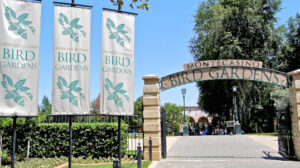See This Report on Johannesburg North Attractions
See This Report on Johannesburg North Attractions
Blog Article
Some Known Facts About Johannesburg North Attractions.
Table of ContentsSome Of Johannesburg North AttractionsThe Facts About Johannesburg North Attractions RevealedNot known Facts About Johannesburg North AttractionsThe 4-Minute Rule for Johannesburg North AttractionsRumored Buzz on Johannesburg North AttractionsHow Johannesburg North Attractions can Save You Time, Stress, and Money.Johannesburg North Attractions for Dummies
Nevertheless you should keep safety in mind and tourists should stay sharp in any way times when in unknown environments. Talk to the locals when you are in community to discover the location you are remaining in. Johannesburg North attractions. When on the road (this does not relate to mall and various other safe and secure environments) ideal basic suggestions is to attempt your finest to appear like a neighborhood and to stay clear of showing any type of form of wealth
Some Known Questions About Johannesburg North Attractions.
Teacher Revil Mason O. J. (Thomson, 1946) discovered the Witwatersrand's pre-colonial background. His archaeological work blew up the 'em pty land' myth, according to which the area was lacking human habitation prior to the arrival of European settlers. In his publications Prehistory of the Transvaal: A Record of Human Task (1962) and Origins of Black People of Johannesburg and the Southern Western Central Transvaal Advertisement 3501880 (1986 ), Teacher Mason showed the extent of social and economic growth in the area prior to Europeans established foot here.

Getting The Johannesburg North Attractions To Work
In 1878, David Wardrop located gold in quartz capillaries at Zwartkop, north of Krugersdorp. In 1881, Stephanus Minnaar came across gold on the farm Kromdraai, near the Cradle of Humankind.
In March 1886, an outcropping (soon to be called the Key Coral reef) was discovered, fairly fortunately, on Gerhardus Oosthuizen's farm Langlaagte. Some say that the Lancastrian coal miner George Pedestrian uncovered this reef. Another travelling English miner, George Harrison (who had actually formerly operated in Australian mines) acquired a prospecting licence in regard of Langlaagte in May 1886.
He chose to carry on in a pursuit for greener fields, and disposed of his Langlaagte claim for the handsome sum of 10. Alas: beneath lay the wealthiest goldfield ever found. The discovery of this abundant auriferous coral reef provoked a gold thrill that signalled completion of bucolic serenity in the southern Transvaal.
It would certainly, within six years, come to be the biggest town in southerly Africa. Within a decade, it would certainly make the Z. A. R. up until after that an anarchical and bankrupt little state the richest country in Africa. By the millenium, the Z. A. R. was to go beyond Russia, Australia and the United States of America to become the globe's leading gold manufacturer, creating greater than a quarter of the world's gold.
Johannesburg North Attractions - Questions
It was referred to as Ferreira's Camp, named after Colonel Ignatius Ferreira. He was a Boer traveler upon whom the British authorities had actually bestowed the status of Buddy of one of the most Differentiated Order of St Michael and St George (qualifying him to the post-nominal letters C. M. G.) in appreciation for his function in the battle that had deposed the Pedi king Sekhukhune in 1879.
Two other camps were established: Meyer's Camp on the farm Doornfontein, and Paarl Camp. The latter was nicknamed Afrikander Camp; numerous people from the Cape Swarm resolved there.

Our Johannesburg North Attractions PDFs
This name acquired money by word of mouth, such that the State Secretary verified the name to the Mining Commissioner on 9 October 1886. Stands in the town were auctioned on 8 December 1886. While some stands were cost 10, others were web link knocked down for as low as sixpence.
2 years later, these erven were to change hands for as much as 750 each. The tented camps diminished as a dorp of corrugated iron structures created and expanded north of the mines located along the Main Reef Roadway. Locations such as Jeppe's Community (where working-class immigrants erected their homes) and Doornfontein (where the upscale brand-new 'Randlords' started to construct their luxurious residences) were soon included in the ever-expanding map of the town.
Some Known Details About Johannesburg North Attractions
In addition to the road names, there were no indications of Johannesburg being located in a Dutch-speaking nation. Years later on, C. W. Kearns O. J. (one of the first boys enrolled at St John's College in 1898) would remember: 'A weird truth regarding Johannesburg was that, although it was in the [Boer Republic], almost everybody spoke English and also the Federal government slaves attended to one in English, unless they were initial dealt with in the Taal (or Reduced Dutch)'.
Therefore, Britain had an interest in ensuring optimum problems for gold production on the Witwatersrand, which the gold was exported to London as opposed to Berlin a critical made all the much more clamant by the Z. A. R - Johannesburg North attractions.'s increasing toenadering with Germany. Mine owners got on an accident course her comment is here with Head of state Kruger, whose plan of monopolistic concessions (usually approved to his cronies) avoided mining firms from obtaining products of products (especially dynamite) and work by themselves, more affordable terms
The Definitive Guide to Johannesburg North Attractions
In 1890, the Volksraad had actually limited the franchise to check out this site white men that had actually stayed in the Z. A. R. for fourteen years or longer, thus disqualifying a lot of the immigrants (that happened to be the major contributors to the fiscus). Nevertheless, anxiety for the ballot was a mere pretense for advertising a various schedule; a lot of uitlanders regarded themselves as short-term visitors and had no intent of remaining in the Z.
Report this page